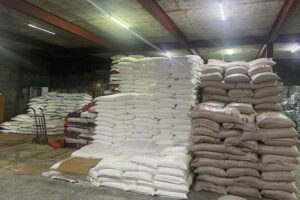THE Sugar Regulatory Administration (SRA) said on Monday that it has set the decline of sugar inventories to the equivalent of three months’ demand as the trigger event for allowing sugar imports.
SRA Administrator Pablo Luis S. Azcona told reporters: “When we need to import is actually at the moment still undergoing study. We are looking at it,” he said.
“What the SRA and the Department of Agriculture (DA) did was identify a trigger point in stock levels, that if we hit that point that’s when we will activate our importation plan,” Mr. Azcona added.
He said that the three-month trigger point accounts for the shipping time of raw sugar imports and the time they take to clear from the Bureau of Customs.
“If we need to import it will need to arrive in the country in July, August up to the beginning of September before milling season (if the demand continues as is),” he added.
The increase in demand was due to the early end of the milling season, which caused large industrial consumers to stock up.
“If the current demand continues, we will need the sugar by sometimes September to October, which is the start of the milling season,” he said.
He added that President Ferdinand R. Marcos, Jr. had recommended maintain stocks at 185 thousand metric tons (MT) to 200 thousand MT, equivalent to a two-month buffer.
Mr. Azcona said that despite an increase in production during the crop year, demand remained the same.
“We have a lot of stock on hand. So, that’s why regarding imports, we’re just waiting for trigger points. We’re studying it, but it’s not that urgent yet. If demand continues, we might need to import our buffer stock,” he added.
Raw sugar production hit 1.92 million MT as of May 5, 9% higher from a year earlier.
According to the SRA, the national raw sugar inventory was 568,734 MT, while demand was estimated at 1.3 million MT.
“As of now, there are a few mills still producing or harvesting,” he said.
Mr. Azcona said that the imports will help prevent a surge in prices and allow industrial users to build up ample stock.
“What we are preventing is a drop in supply to a level that the market will become insecure… Number two, our industrial or manufacturing market… needs to be secure knowing that their factories will always have a supply of sugar,” he added. — Adrian H. Halili
